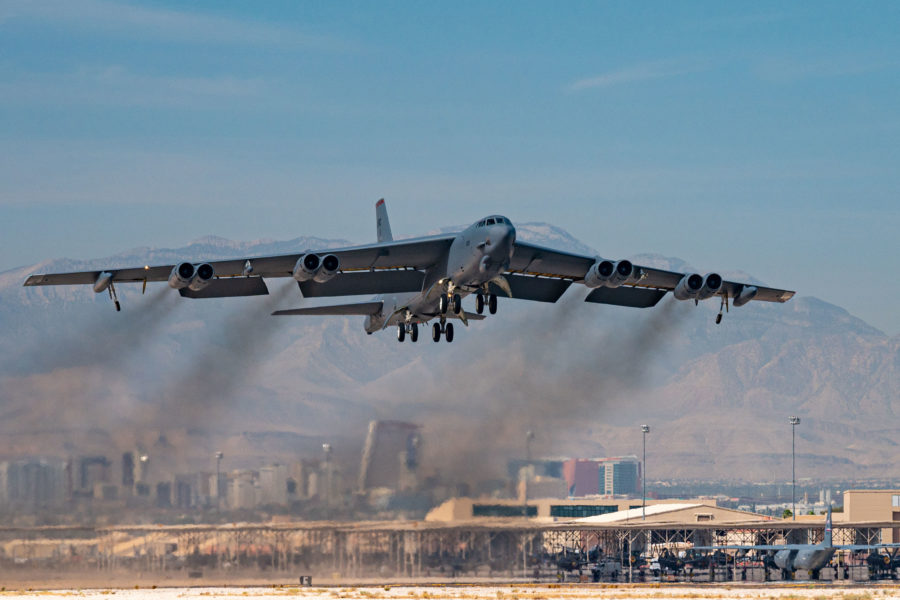The contract to re-engine the B-52 bomber should be awarded by the end of this month, senior service acquisition officials reported Sept. 21.
The award of the B-52 Commercial Engine Replacement Program (CERP) is “imminent,” Lt. Gen. Duke Z. Richardson, top Air Force uniformed acquisition official, told reporters at AFA’s Air, Space & Cyber Conference. Darlene Costello, acting USAF acquisition executive, said the process of evaluating the last elements of the proposals is being done and that the source selection should be completed “within the month.” She added, “It could be faster, but I will not accept” a source selection until the program executive officer’s team has “completed their work.”
The program seeks to replace the B-52’s original-equipment TF33 engines with new business-class power plants that should improve fuel burn by 30 percent and range by 40 percent, while requiring far less maintenance. Offerers have said their engines are so reliable that they will not need to come off the wing of the B-52 for an overhaul during the bomber’s remaining lifetime.
Richardson said using the “mid-tier acquisition” approach approved by Congress for prototyping efforts on the CERP will likely save about three years on the program’s timeline. It might be possible to accelerate it a bit more, he said, but the acquisition community wants to ensure “that we do it properly, … we want to make sure we do ‘speed with discipline.’” The target for getting the re-engining underway is 2030, he said, because after that the TF33 is “not going to be very supportable.”
If the program were of the standard type, it would be in the “technology maturation and risk reduction” phase at this point, he said.
GE Aviation, Pratt & Whitney, and Rolls Royce have tendered offers on the program, which required that they submit electronic proposals that could be matched against each other digitally by Air Force Materiel Command. GE has offered the CF34-10 and its Passport engine, while Pratt & Whitney is tendering its PW800. Rolls Royce is offering its F130 engine.
Pratt & Whitney initially proposed an upgrade of the TF33, but the Air Force rejected that idea.
The CERP will likely be converted to a major acquisition program after the initial phase is complete, Costello said.
The Air Force intends to replace all eight engines on each of 76 B-52s, for a total of about 608 power plants, plus spares. The service wants to retain the B-52 through about 2050. It has said the program, which industry officials predict could be worth $10 billion, could potentially pay for itself through maintenance avoidance and fuel savings.
Boeing will integrate the selected engine onto the B-52, converting the jet’s old analog engine controls to digital ones. While Boeing provided “information” to the Air Force about which engines were relatively easier or harder to integrate—and what other changes might be required—the company did not make a recommendation of any particular engine, a Boeing program official said. Boeing will decide how the engines should be placed on the wings and whether to mount them in twin-engine nacelles, as the TF33s are mounted now. The official said the disused infrared blisters on the aircraft’s nose will be removed to improve airflow to the new engines, restoring the aircraft’s original profile.
In addition to the B-52’s engines, the Air Force is planning to replace the bomber’s radar, communications systems, and much of the cockpit.


